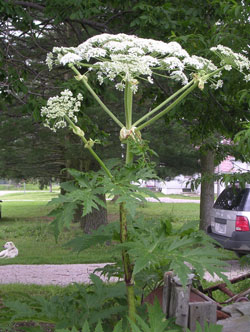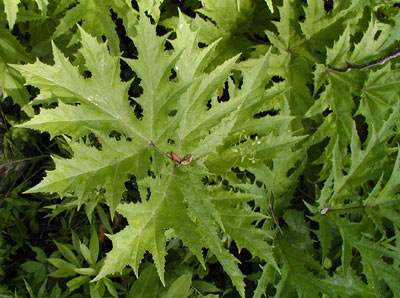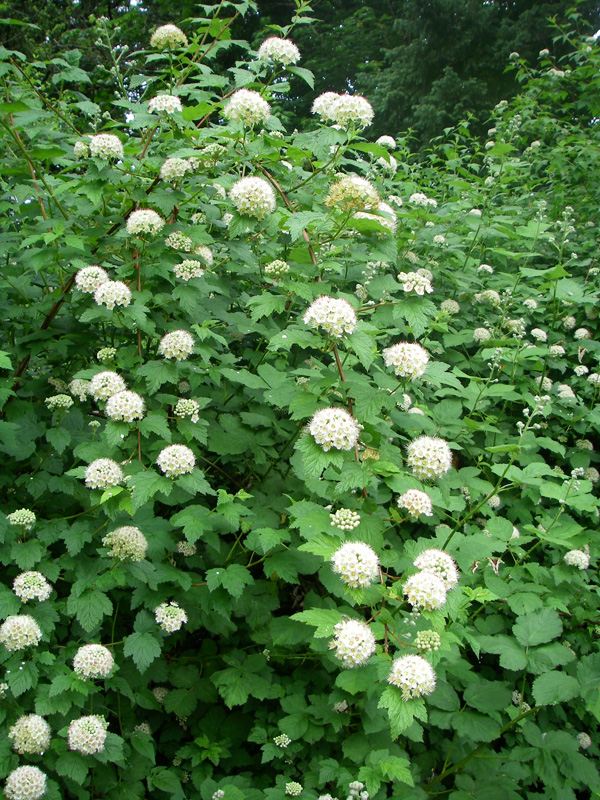Invasive: Giant hogweed (Heracleum mantegazzianum)
Characteristics: Giant hogweed is a very large member of the carrot family, reaching as much as 4.5 m (15 ft) in height. First-year growth is a bushy rosette of deeply-incised, compound leaves, 30 cm to 1.5 m (1 to 5 ft) wide (yes, you read that right!), with coarse, dense hairs on the underside. Plants flower in their second year or later, depending on how quickly root development occurs. The stalk may be up to 10 cm (4 in) in diameter, and has coarse white hairs and red-purple blotches; white flowers are borne at the top of the stalk in flat-topped umbels up to 0.8 m (2.5 ft) across in late June and early July. Several plants in this family—including the native cow parsnip (H. lanatum)—look similar to giant hogweed, but are not nearly so “supersized”.
Note: Sap from this plant reacts with sunlight to cause severe burns. If you suspect you have this plant, avoid contact with bare skin and eyes. This is one of 15 plants on Portland’s Required Eradication List. The City of Portland provides free assistance to residents in identifying nuisance plants and methods to remove them. Contact the Bureau of Environmental Services Early Detection Rapid Response team at 503-823-2989 if you think you have this species growing on your property. For the full list of required eradication species, see https://www.portlandoregon.gov/bes/article/306364
Spread: Giant hogweed spreads by seeds, which may be dispersed by wind, water or animals. Though not yet widespread locally, each hogweed plant may produce up to 20,000 seeds, which can remain viable in soil for many years. Native to Asia, it was introduced here as an ornamental, but naturalized readily and can be found in a variety of disturbed areas throughout North America.
Control: Small patches of giant hogweed can be dug up by hand; repeated cutting or mowing can also keep the plant controlled, as can appropriate herbicide application (for larger/established populations). Do not let giant hogweed go to seed. Be sure to cover all skin and wear eye protection when working on or around giant hogweed to avoid exposure to the juice/sap. The Oregon Department of Agriculture considers giant hogweed an “A-list” noxious weed, and would like information on its location. If you see giant hogweed, you can report it at 1-866-INVADER or online at http://oregoninvasiveshotline.org/
Native Replacements: Pacific ninebark (Physocarpus capitatus) is a native shrub with pretty white flowers in umbels that does well in conditions similar to those occupied by giant hogweed; no skin burning from this one, though!



